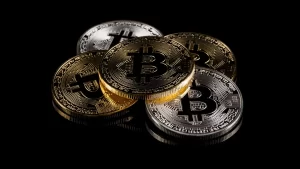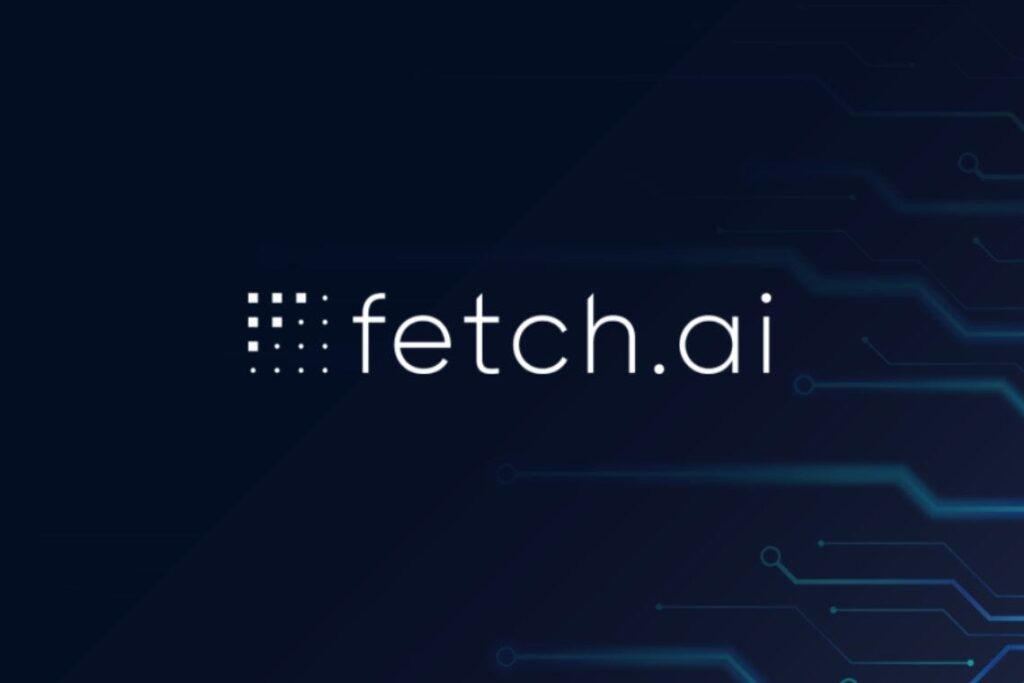The Artificial Intelligence (AI) industry has long been dominated by major corporations backed by governments and Big Tech.
However, the trend has recently permeated the cryptocurrency market, allowing ordinary investors to participate through projects like Fetch AI.
This optimistic outlook is reflected in Fetch AI’s impressive price surge over the past year.
According to CoinGecko, Fetch AI’s price has soared by 537% over 12 months, reaching $1.45.
Despite a 7.7% drop in the past week, the overall trend remains positive, mirroring the volatility seen in other AI-related cryptocurrencies.
Fetch AI distinguishes itself as an open-source protocol designed to support a “permissionless, decentralized machine learning network with a crypto economy.”
The developers aim to democratize AI technology on a platform where anyone can access secure datasets using “autonomous AI to execute tasks that leverage its global network of data.”
A significant development in the ecosystem is the merger of three notable AI crypto projects: Fetch AI, Ocean Protocol, and SingularityNET.
This merger, known as Superintelligence, has the potential to revolutionize the sector, especially with Crypto.com announcing its support.
READ MORE: Runes Token Transactions Drop 88% Amid Bitcoin Blockchain Challenges
Under this merger, Ocean Protocol and SingularityNET will be integrated into Fetch AI, leading to the delisting of OCEAN and AGIX tokens from various platforms.
Fetch AI is poised for a significant price increase, potentially rising by 36% from the inverse head and shoulders (H&S) pattern resistance at $1.7.
With the current price retracing to $1.45 after surpassing $1.7, more traders are likely to go long on Fetch AI, aiming for a breakout to $2.34.
The Relative Strength Index (RSI) supports this breakout, rallying into the overbought region.
If the RSI remains above 70 and moves toward 100, Fetch AI’s price might reach higher levels.
Other indicators, such as the Exponential Moving Averages (EMAs), also support the uptrend.
The 200-day EMA at $1.75 provides support in case of a sudden correction, while the 20-day EMA in blue crossing above the 50-day EMA in red further confirms the bullish trend.
The area around $1.6 will be crucial if losses occur due to profit-taking.
To submit a crypto press release (PR), send an email to sales@cryptointelligence.co.uk.
Paxos International, a blockchain and tokenization platform, has achieved full regulatory approval from the Monetary Authority of Singapore (MAS).
Paxos’ Singapore branch, the issuer of the gold-backed stablecoin Pax Gold (PAXG), now has authorization to provide digital payment token services as a Major Payments Institution.
This regulatory green light allows Paxos to launch a stablecoin in alignment with MAS’ forthcoming regulatory framework.
This approval signifies Paxos’ entry into its third international market, following the United States and the United Arab Emirates, where Paxos-affiliated entities are permitted to issue stablecoins.
This milestone was highlighted in a July 1 announcement.
Walter Hessert, head of strategy at Paxos, emphasized the importance of this approval for their global stablecoin offerings: “Stablecoins issued in accordance with standards set by a regulator like MAS — known for its rigorous regulatory standards — represent a significant step toward democratizing access to commerce and financial services.”
In a related development, DBS, Southeast Asia’s largest bank by assets under management, will serve as Paxos’ primary banking partner.
According to the announcement, DBS will handle cash management and custody of the stablecoin reserves.
READ MORE: Dogecoin’s Surge in Trading Volume Sparks Bullish Momentum in Crypto Sphere
Evy Theunis, head of digital assets at DBS Bank, underscored the importance of trust and security in stablecoin adoption: “Stablecoin issuers will find that our solutions will help them meet the robust standards regulators and customers expect from them.
This partnership further expands DBS’ wide-ranging involvement across the digital asset ecosystem.”
This regulatory approval in Singapore marks another significant step in Paxos’ global expansion efforts. Earlier, in June, Paxos announced the launch of an interest-bearing stablecoin called the Lift Dollar (USDL).
This stablecoin, regulated by the Abu Dhabi Global Market (ADGM), will pay overnight yield on the interest earned from the reserves backing it.
Based in New York, Paxos also mints PayPal USD, Pax Dollar (USDP), and Pax Gold (PAXG) under the supervision of the New York Department of Financial Services (NYDFS).
This recent regulatory success in Singapore demonstrates Paxos’ commitment to expanding its regulated stablecoin offerings worldwide, further establishing its presence in key financial markets.
To submit a crypto press release (PR), send an email to sales@cryptointelligence.co.uk.
Over half of the top American hedge funds have disclosed exposure to newly launched spot Bitcoin exchange-traded funds (ETFs) in a year, as BTC/USD has significantly outperformed major stocks and indexes.
Data from investment firm River reveals that 13 out of the top 25 United States hedge funds owned Bitcoin ETFs by the end of Q1 2024.
Notably, Millennium Management held 27,263 BTC worth $1.69 billion, making up about 2.5% of its total assets under management worth $67.7 billion.
Other significant players include Schonfeld Strategic Advisors with 6,734 BTC and Point72 Asset Management with 1,089 BTC.
In contrast, some top hedge funds, such as Bridgewater Associates, AQR Capital Management, and Balyasny Asset Management, have yet to invest in Bitcoin ETFs.
Interestingly, Bitcoin’s growing acceptance coincides with a rise in cash reserves across U.S. companies.
According to an analysis by treasury advisory firm Carfang Group, the cash or cash equivalents held by corporations reached a record high of $4.11 trillion in Q1 2024.
Some companies, namely Reddit, Semler Scientific, JPMorgan, and Wells Fargo, have allocated a small portion of their cash reserves to Bitcoin or Bitcoin ETFs.
This trend indicates that U.S. firms, including hedge funds and corporations, have become more confident in treating Bitcoin as a viable asset for diversification and hedging against traditional market risks.
Bitcoin outperforming Apple, Tesla stocks in 2024
Wall Street’s interest in Bitcoin grows as the cryptocurrency fares better than top stocks and stock indexes.
READ MORE: Vitalik Buterin Advocates Clearer Crypto Regulations Amid Regulatory Frustration in the US
BTC’s returns in the first half of 2024 were about 94%. In comparison, the U.S. benchmark S&P 500 index rose 23%, while the Dow Jones Industrial Average grew 14% in the same period.
Even Apple and Tesla stocks underperformed Bitcoin, returning 10% and -29%, respectively, year-to-date.
However, Nvidia, which recently became the world’s most valuable publicly traded company, outperformed Bitcoin, rising by over 150% in the first six months of 2024 due to an ongoing artificial intelligence boom.
Veteran trader Peter Brandt anticipates Bitcoin’s relevance growing as a hedging asset, particularly against traditional safe havens like gold.
He noted that BTC’s market capitalization could rise 230% against gold after 2025.
Earlier this year, ARK Invest’s annual research report concluded that institutional portfolios aiming for maximized risk-adjusted returns should have allocated 19.4% to Bitcoin in 2023.
To submit a crypto press release (PR), send an email to sales@cryptointelligence.co.uk.
Polkadot’s treasury holds just under $245 million in assets, but recent reports have caused concerns about its budget sustainability over the next two years.
These worries stem from a Polkadot treasury report suggesting the project’s budget would only last two years at the current spending rate.
“Polkadot’s Treasury is becoming more complex and harder to grasp,” said Tommi Enenkel, the head ambassador, in a June 28 report for the first half of 2024.
He highlighted that Polkadot is spending directly and allocating value in bounties and collectives for future use.
“At the current rate of spending, the Treasury has about two years of runway left, although the volatile nature of crypto-denominated treasuries makes it hard to predict with confidence,” Enenkel added.
This has sparked discussions about stricter budgeting or changing the system’s inflation parameters.
Despite these concerns, the treasury is not at risk of running out of funds after the current $245 million. Around 7% of the total token inflation (staking rewards) is continually sent to the treasury.
Giotto de Filippi, a notable DOT activist, clarified to Cointelegraph that “the inflation in Polkadot is split between stakers and the treasury, to ensure that the treasury will always have money… So it doesn’t make sense to talk about money.”
READ MORE: Dogecoin’s Surge in Trading Volume Sparks Bullish Momentum in Crypto Sphere
Polkadot’s treasury includes $188 million in liquid assets, primarily in Polkadot (DOT) tokens, along with stablecoins Tether (USDT) and USD Coin (USDC).
In the first half of the year, Polkadot experienced a significant increase in spending, totaling $87 million. Over 40% ($36.7 million) went towards advertising, influencers, conferences, and events.
Enenkel noted that spending became more efficient as DOT’s price peaked at $11.46 in mid-March 2024, the highest since May 2022.
Although the price has since dropped to $6.33, it is up nearly 11% on the week, according to CoinGecko.
Cointelegraph has approached Polkadot for comments on these concerns. Enenkel observed that ecosystem worries about treasury usage are growing, with balances declining since mid-2023.
Revenue dropped by 58.5% from the second half of 2023, attributed to decreased network fees.
The treasury received over 5.2 million DOT in inflation-based income in the first half of the year, down from 7.8 million DOT in the prior half-year.
Enenkel suggested creating departments represented as bounties and collectives for more effective treasury capital deployment, and proposed lowering DOT’s 10% inflation rate to reduce selling pressure and strengthen its purchasing power.
To submit a crypto press release (PR), send an email to sales@cryptointelligence.co.uk.
Bitcoin and Ethereum users currently benefit from low transaction fees across both ecosystems.
As of June 23, the average Bitcoin transaction fee dropped to an eight-month low of $1.93, while average Ethereum fees were $0.70 on June 22, a significant decrease from the $2.50 highs observed in March.
Vitali Dervoed, CEO and co-founder of the onchain decentralized exchange Spark, attributes the reduction in Bitcoin fees to decreased network congestion and changes in mining activities post-halving.
He noted, “[The] halving often leads to a temporary decrease in mining activity as miners adjust to lower profitability.
This reduction in activity can decrease the competition for block space, thereby lowering fees.”
Justin d’Anethan, head of business development APAC at crypto market maker Keyrock, mentioned additional factors like the decline in transaction spikes from Ordinals and Runes inscriptions.
“The past few months have seen massive transaction spikes in the wake of Ordinals and Runes inscriptions, but the hype seems to have, if not died down, slowed down,” d’Anethan explained.
Carlos Mercado, data scientist at blockchain data firm Flipside Crypto, also cited Ordinals as a factor, noting, “After the halving, there were some short-term spikes in onchain BTC activity and fees. But generally, the Ordinals and BTC inscriptions narratives come and go.”
READ MORE: Vitalik Buterin Advocates Clearer Crypto Regulations Amid Regulatory Frustration in the US
Despite the benefit to users, the drop in fees poses challenges for Bitcoin miners. Mercado pointed out, “BTC fees [were] making up for lost block rewards,” but with decreased fees, miners face profitability issues.
He emphasized, “Long term, for Bitcoin to remain secure, miners performing proof-of-work must be able to recoup their real-world electrical/compute costs.”
Regarding Ethereum, low fees are linked to the Dencun update in March. D’Anethan explained that the shift of traffic to layer-2 solutions like Arbitrum, Optimism, and Base has alleviated some pressure on Ethereum’s main chain.
“The Dencun upgrade aimed at solving that by making layer-2 activity much much cheaper […] this has pushed both builders and users away,” he said.
Dervoed agreed, attributing Ethereum’s fee decline to increased adoption of layer-2 solutions.
He stated, “Ethereum’s fee decline is primarily a result of the increasing adoption of L2 solutions, such as Optimistic and zero-knowledge rollups.”
While some see the low fees as a positive development, Mercado expressed concerns about the long-term implications for both Bitcoin and Ethereum.
He warned that continuous halvings and issuance exceeding burns could result in inflation and potential security risks for these networks.
To submit a crypto press release (PR), send an email to sales@cryptointelligence.co.uk.
Bitcoin focused on $63,000 on July 2 as attention shifted to macro liquidity changes.
Data from Cointelegraph Markets Pro and TradingView showed BTC price action attempting to cement gains, accompanying the monthly close.
Despite failing to break key resistance levels above $64,000, Bitcoin traders found renewed optimism as July began.
“Bitcoin has resumed its uptrend,” popular trader and analyst Rekt Capital summarized in one of several posts on X (formerly Twitter).
Rekt Capital highlighted the monthly close as a key sign of strength, with a chart showing a breakout from June’s downtrend.
“The goal? To build a foundation from which it will be able to springboard to the Range High area at ~$71,500 over time,” he explained.
Fellow trader Daan Crypto Trades emphasized United States dollar liquidity trends.
As Cointelegraph reported, these are crucial for crypto market performance, with expectations of positive repercussions increasing last month.
“During this range, the BTC price has moved mostly in line with USD Liquidity,” he asserted alongside a comparative chart.
READ MORE: Runes Token Transactions Drop 88% Amid Bitcoin Blockchain Challenges
“We just saw a big decrease into a nice move up during this end of the quarter into the new quarter.
Liquidity has moved little this year but both BTC & Stocks have been front-running a future expansion of USD liquidity.”
Market analyst Cole Garner suggested that recent Federal Reserve liquidity changes could impact BTC price strength in the short term.
“Biggest Fed Net Liquidity rate-of-change spike in 15 months,” he observed.
“Last time that happened, bitcoin rose ~40% in one week. Not assuming a repeat, but you love to see it.”
Technical indicator data also hinted at increased volatility for Bitcoin.
On weekly timeframes, Bollinger Bands were constricting to levels seen only a handful of times in Bitcoin’s history—a classic precursor to major breakouts.
This phenomenon was observed on X by popular analyst Matthew Hyland.
To submit a crypto press release (PR), send an email to sales@cryptointelligence.co.uk.
Sentient, an open-source AI development platform, has raised $85 million in seed funding led by Peter Thiel’s Founders Fund, with contributions from Pantera Capital and Framework Ventures.
This funding will help recruit engineers and advance Sentient’s open AI platform, as announced on July 2.
Sentient aims to empower AI developers to monetize their open-source models and data, drawing parallels to ecosystems like the Super Intelligence Alliance.
The company noted, “We are in an era reminiscent of the 1995 closed-source software landscape.
“At present, the dominance of closed-source AI has centralized immense power with a few organizations. Although open-source AI development exists, it lacks sufficient incentives for developers and does not enable them to be equal stakeholders.”
The startup’s leadership includes Sandeep Nailwal, founder of Polygon; Pramod Viswanath, Princeton professor and co-inventor of the technology behind the 4G wireless standard; and Himanshu Tyagi, a professor at the Indian Institute of Science.
Sentient plans to leverage a blockchain protocol and incentive mechanism to align economic interests for developers, fostering the growth of open artificial general intelligence.
Joey Krug, partner at Founders Fund, stated, “Currently, anyone is able to just copy models without paying for them and Sentient aims to solve this incentive problem which disincentivizes open source AI.” Sentient’s testnet is set to launch in the current quarter of 2024.
READ MORE: Cryptocurrency ATM Installations Surge Globally, Approach Record Highs in 2024
Additional investors in the seed round include Robot Ventures, Symbolic Capital, Dao5, Delphi, Primitive Ventures, Nomad, Hack VC, Arrington Capital, Hypersphere, IDG, Topology, Protagonist, Folius, Sky9, Canonical Crypto, Dispersion Capital, Mirana, Foresight, HashKey, Spartan, and others.
Decentralized AI is gaining momentum in the tech industry, with numerous startups merging blockchain and AI technologies in 2024.
One such protocol, Ora, raised $20 million from Polychain, HF0, and Hashkey Capital in June.
Ora is developing technology for tokenizing AI models via its initial model offering.
This ERC-20 token-based mechanism allows token holders to own and share revenue from AI models.
Venture capital investment in blockchain startups has surged recently.
Galaxy Research data shows that investors poured $2.49 billion into 603 deals in the first quarter of 2024, marking a 29% increase in funding and a 68% rise in deal count from the previous quarter.
To submit a crypto press release (PR), send an email to sales@cryptointelligence.co.uk.
Dogecoin has experienced a notable surge in trading volume, marking a potential shift in sentiment within the crypto market amid recent bearish trends.
Over the past 24 hours, Dogecoin (DOGE) has seen its trading volume spike by an impressive 38.13%, reaching $659.84 billion.
This increase comes at a pivotal moment, as the broader crypto market has been grappling with bearish signals, hinting at a possible reversal.
Despite a 23.90% price decline over the last month, Dogecoin’s recent uptick in trading activity is seen as a positive development.
Currently valued at $0.1271, DOGE has risen by 3.34% in the past day, indicating growing interest among traders and potential for further gains.
The resurgence of Dogecoin is further supported by a 7.25% increase in its Open Interest (OI), which now stands at $643.30 million.
This rise in OI, particularly evident on major platforms such as Bybit, Binance, and OKX, reflects renewed strategic positioning by traders and underscores a strengthening bullish sentiment.
As a leader in the meme coin sector, which includes tokens like Shiba Inu (SHIB) and Pepe (PEPE), Dogecoin’s performance holds significant implications.
READ MORE: Spot Bitcoin ETFs See $31M Inflows, Reversing Seven-Day Outflows
While meme coins have faced challenges during recent market downturns, Dogecoin’s bullish indicators suggest a potential pathway for recovery that could uplift other tokens within the sector.
In conclusion, the substantial rise in trading volume and open interest for Dogecoin indicate a possible bullish trend emerging in the meme coin market.
This resurgence in market activity and trader interest may sustain upward momentum, benefiting not only Dogecoin but also other prominent meme coins.
As these developments unfold, stakeholders will closely monitor their implications in the evolving crypto landscape.
To submit a crypto press release (PR), send an email to sales@cryptointelligence.co.uk.
Meta’s CEO Mark Zuckerberg envisions a future where smart glasses equipped with holographic displays will redefine how humans communicate and compute.
In an interview with YouTuber Kane “Kalloway” Sutter, Zuckerberg highlighted Meta’s ambitious plans, emphasizing that these glasses, featuring cameras, microphones, speakers, and full-field-of-view holographic displays, could eclipse smartphones as the dominant technology.
Despite skepticism from critics mocking Meta’s shift from Facebook to focusing on the metaverse, Zuckerberg remains bullish on smart glasses as the next big innovation.
He acknowledged that while these glasses won’t completely replace smartphones, they could significantly reduce their usage.
According to Zuckerberg, Meta is progressing through three phases of development: from a displayless glasses with voice AI, similar to Ray-Ban Meta, to a heads-up display, and finally to a premium version with a full holographic display.
Zuckerberg described these future glasses as not just a technological leap, but a seamless integration of real-time communication and augmented reality features, all without the bulkiness of traditional VR headsets.
READ MORE: Jamaal Bowman Loses Democratic Primary Amid Major PAC Opposition
He believes these glasses will enable users to access information in a more natural and engaging manner compared to smartphones, which he and Kalloway criticized for disrupting presence.
Beyond mere communication devices, Zuckerberg sees potential for smart glasses as interfaces for neural technology.
Unlike invasive solutions like Neuralink, Meta is exploring a non-invasive neural wristband that interprets nerve signals for digital interaction.
Combined with holographic displays, this could transform daily life into a limitless Web3 environment.
While Meta is still fine-tuning these innovations, Zuckerberg revealed that prototype demonstrations have generated enthusiastic responses.
He emphasized their commitment to perfecting the technology before a broader release, highlighting the excitement these advancements have sparked among early testers.
In summary, Zuckerberg’s vision for Meta’s future revolves around smart glasses that blend cutting-edge technology with everyday usability, aiming to reshape how we interact with information and each other in the digital age.
To submit a crypto press release (PR), send an email to sales@cryptointelligence.co.uk.
Vitalik Buterin, co-founder of Ethereum, recently voiced his frustration with the current state of cryptocurrency regulation, highlighting a paradoxical situation faced by developers.
On the social media platform Warpcast, Buterin criticized regulatory efforts in the US, stating:
“The main challenge with crypto regulation (esp in the US) has always been this phenomenon where if you do something useless, or something where you’re asking people to give you money in exchange for vague references to potential returns at best, you are free and clear, but if you try to give your customers a clear story of where returns come from, and promises about what rights they have, then you’re screwed because you’re ‘a security.’
The incentive gradient that this ‘anarcho-tyranny’ creates ends up worse for the space than either plain anarchy or plain tyranny.”
He lamented the prevalence of bad actors and scams in the unregulated space, advocating for measures like limiting leverage, mandatory audits, transparency, and knowledge tests to weed out dubious projects.
While the feasibility of implementing cryptocurrency knowledge tests remains uncertain, Buterin emphasized the need for policies that address leverage limits and transparency requirements.
He criticized the US regulatory approach as inconsistent and opaque, suggesting a preference for regulations that incentivize clear, long-term project viability:
READ MORE: Bitcoin ETFs See $31M Inflows, Reversing Seven-Day Outflows
“I would much rather see us move to the opposite situation, where issuing a token without giving a clear long-term story for why it will maintain or increase in economic value is the riskier thing.”
However, Buterin acknowledged that achieving effective regulations requires genuine cooperation between regulators and the cryptocurrency industry:
“Actually getting to this will require good-faith engagement, both from regulators and from industry.”
In conclusion, Buterin’s critique underscores the challenges posed by current regulatory frameworks, advocating for reforms that promote transparency and long-term sustainability in cryptocurrency projects.
He argues that clear regulatory guidelines could mitigate risks associated with speculative investments and foster a more stable environment for innovation in the crypto space.
To submit a crypto press release (PR), send an email to sales@cryptointelligence.co.uk.












